A Comprehensive Study on Child Labour and Academic Achievement
VerifiedAdded on 2022/12/12
|6
|1419
|169
Essay
AI Summary
This essay explores the detrimental effects of child labour on academic performance, highlighting how it deprives children of their childhood, potential, and dignity. It discusses the prevalence of child labour in various industries, particularly in supply chains, where children often face hazardous conditions and exploitation. The essay emphasizes the negative consequences of child labour, including premature ageing, malnutrition, drug dependency, and limited educational opportunities, ultimately hindering their professional and social growth. It calls for a collective commitment from governments, enterprises, and individuals to eliminate child labour through education, ethical consumerism, and support for organizations working to protect children's rights, advocating for fair trade practices and stricter enforcement of child protection laws to ensure a brighter future for vulnerable children.
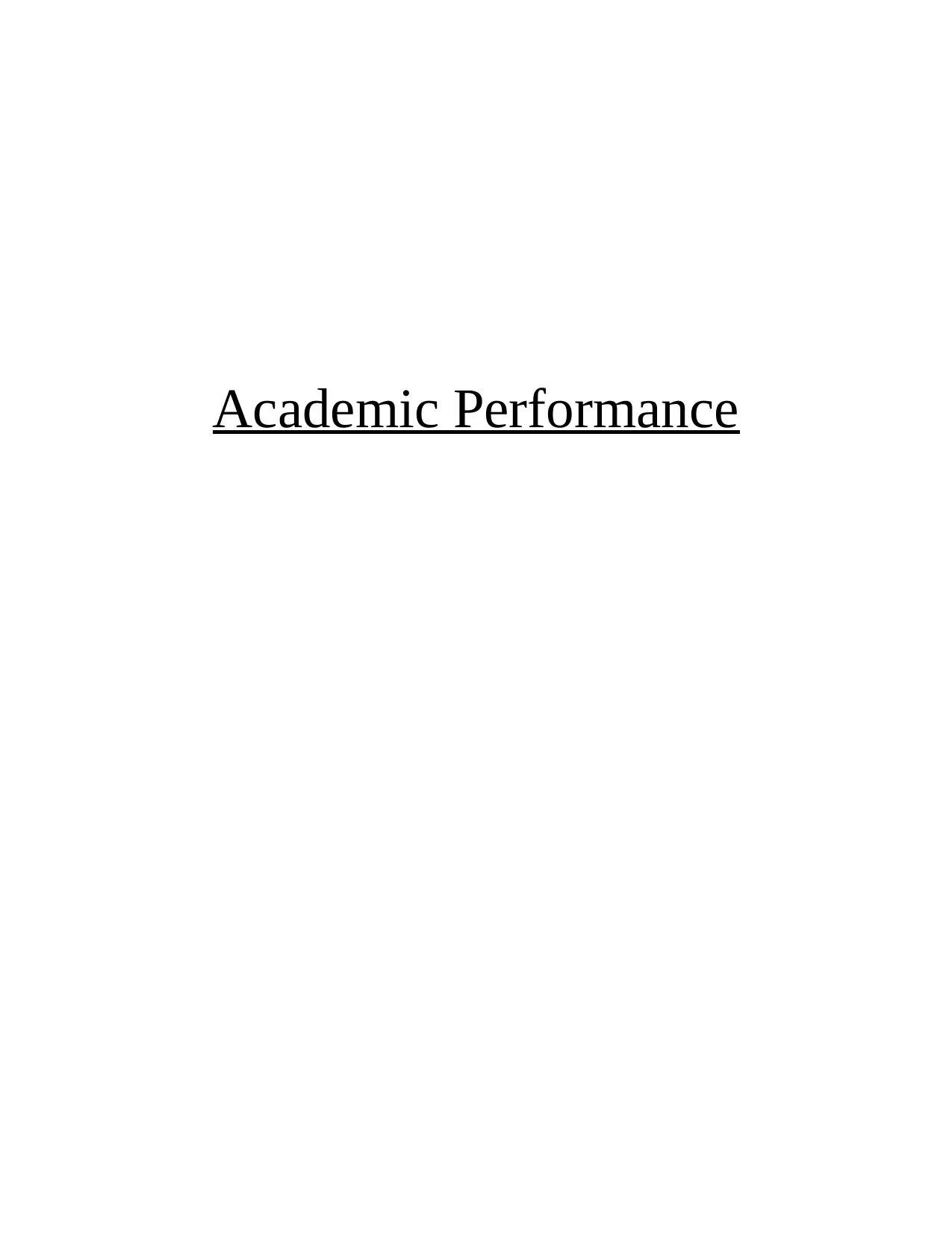
Academic Performance
Paraphrase This Document
Need a fresh take? Get an instant paraphrase of this document with our AI Paraphraser
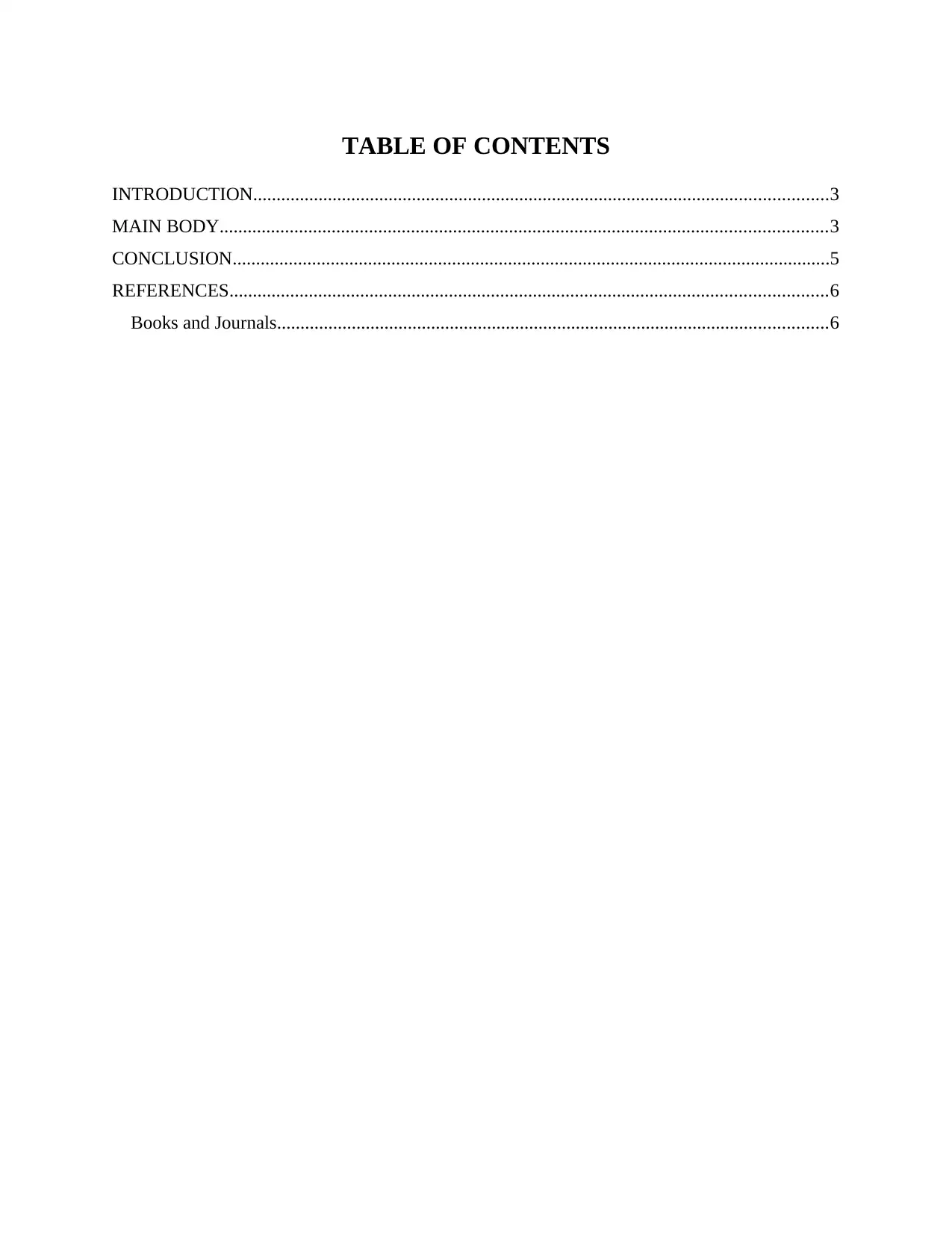
TABLE OF CONTENTS
INTRODUCTION...........................................................................................................................3
MAIN BODY..................................................................................................................................3
CONCLUSION................................................................................................................................5
REFERENCES................................................................................................................................6
Books and Journals......................................................................................................................6
INTRODUCTION...........................................................................................................................3
MAIN BODY..................................................................................................................................3
CONCLUSION................................................................................................................................5
REFERENCES................................................................................................................................6
Books and Journals......................................................................................................................6
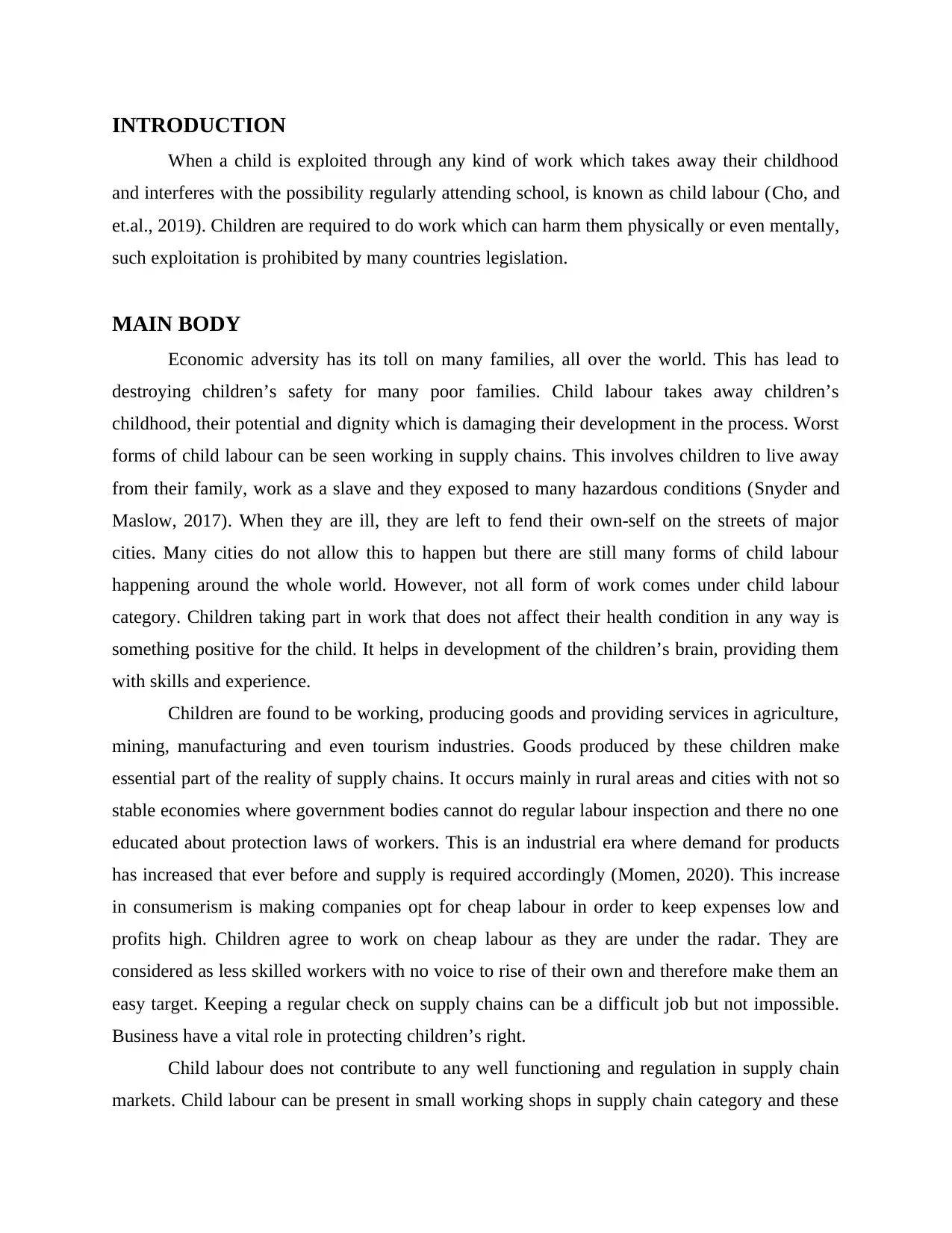
INTRODUCTION
When a child is exploited through any kind of work which takes away their childhood
and interferes with the possibility regularly attending school, is known as child labour (Cho, and
et.al., 2019). Children are required to do work which can harm them physically or even mentally,
such exploitation is prohibited by many countries legislation.
MAIN BODY
Economic adversity has its toll on many families, all over the world. This has lead to
destroying children’s safety for many poor families. Child labour takes away children’s
childhood, their potential and dignity which is damaging their development in the process. Worst
forms of child labour can be seen working in supply chains. This involves children to live away
from their family, work as a slave and they exposed to many hazardous conditions (Snyder and
Maslow, 2017). When they are ill, they are left to fend their own-self on the streets of major
cities. Many cities do not allow this to happen but there are still many forms of child labour
happening around the whole world. However, not all form of work comes under child labour
category. Children taking part in work that does not affect their health condition in any way is
something positive for the child. It helps in development of the children’s brain, providing them
with skills and experience.
Children are found to be working, producing goods and providing services in agriculture,
mining, manufacturing and even tourism industries. Goods produced by these children make
essential part of the reality of supply chains. It occurs mainly in rural areas and cities with not so
stable economies where government bodies cannot do regular labour inspection and there no one
educated about protection laws of workers. This is an industrial era where demand for products
has increased that ever before and supply is required accordingly (Momen, 2020). This increase
in consumerism is making companies opt for cheap labour in order to keep expenses low and
profits high. Children agree to work on cheap labour as they are under the radar. They are
considered as less skilled workers with no voice to rise of their own and therefore make them an
easy target. Keeping a regular check on supply chains can be a difficult job but not impossible.
Business have a vital role in protecting children’s right.
Child labour does not contribute to any well functioning and regulation in supply chain
markets. Child labour can be present in small working shops in supply chain category and these
When a child is exploited through any kind of work which takes away their childhood
and interferes with the possibility regularly attending school, is known as child labour (Cho, and
et.al., 2019). Children are required to do work which can harm them physically or even mentally,
such exploitation is prohibited by many countries legislation.
MAIN BODY
Economic adversity has its toll on many families, all over the world. This has lead to
destroying children’s safety for many poor families. Child labour takes away children’s
childhood, their potential and dignity which is damaging their development in the process. Worst
forms of child labour can be seen working in supply chains. This involves children to live away
from their family, work as a slave and they exposed to many hazardous conditions (Snyder and
Maslow, 2017). When they are ill, they are left to fend their own-self on the streets of major
cities. Many cities do not allow this to happen but there are still many forms of child labour
happening around the whole world. However, not all form of work comes under child labour
category. Children taking part in work that does not affect their health condition in any way is
something positive for the child. It helps in development of the children’s brain, providing them
with skills and experience.
Children are found to be working, producing goods and providing services in agriculture,
mining, manufacturing and even tourism industries. Goods produced by these children make
essential part of the reality of supply chains. It occurs mainly in rural areas and cities with not so
stable economies where government bodies cannot do regular labour inspection and there no one
educated about protection laws of workers. This is an industrial era where demand for products
has increased that ever before and supply is required accordingly (Momen, 2020). This increase
in consumerism is making companies opt for cheap labour in order to keep expenses low and
profits high. Children agree to work on cheap labour as they are under the radar. They are
considered as less skilled workers with no voice to rise of their own and therefore make them an
easy target. Keeping a regular check on supply chains can be a difficult job but not impossible.
Business have a vital role in protecting children’s right.
Child labour does not contribute to any well functioning and regulation in supply chain
markets. Child labour can be present in small working shops in supply chain category and these
⊘ This is a preview!⊘
Do you want full access?
Subscribe today to unlock all pages.

Trusted by 1+ million students worldwide
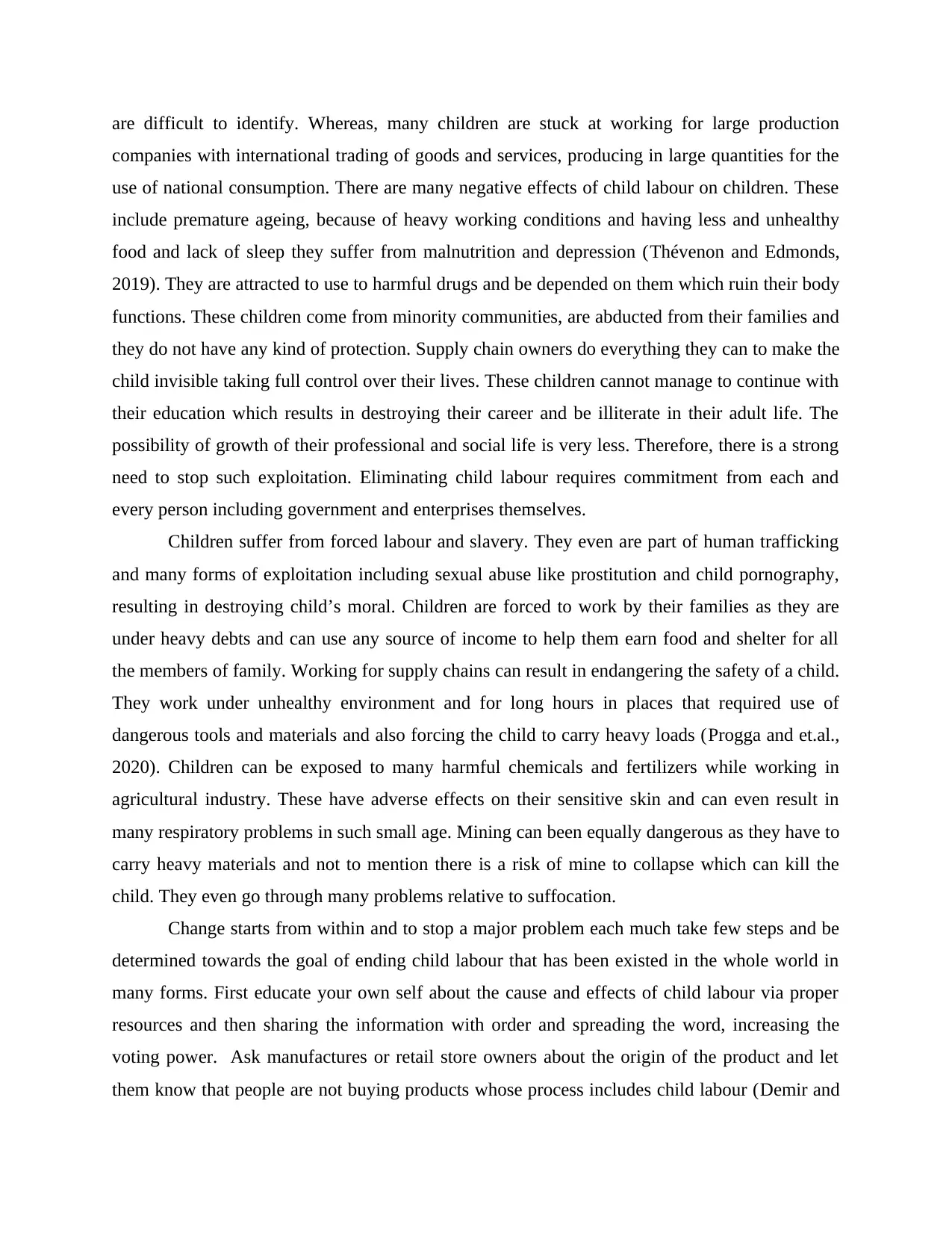
are difficult to identify. Whereas, many children are stuck at working for large production
companies with international trading of goods and services, producing in large quantities for the
use of national consumption. There are many negative effects of child labour on children. These
include premature ageing, because of heavy working conditions and having less and unhealthy
food and lack of sleep they suffer from malnutrition and depression (Thévenon and Edmonds,
2019). They are attracted to use to harmful drugs and be depended on them which ruin their body
functions. These children come from minority communities, are abducted from their families and
they do not have any kind of protection. Supply chain owners do everything they can to make the
child invisible taking full control over their lives. These children cannot manage to continue with
their education which results in destroying their career and be illiterate in their adult life. The
possibility of growth of their professional and social life is very less. Therefore, there is a strong
need to stop such exploitation. Eliminating child labour requires commitment from each and
every person including government and enterprises themselves.
Children suffer from forced labour and slavery. They even are part of human trafficking
and many forms of exploitation including sexual abuse like prostitution and child pornography,
resulting in destroying child’s moral. Children are forced to work by their families as they are
under heavy debts and can use any source of income to help them earn food and shelter for all
the members of family. Working for supply chains can result in endangering the safety of a child.
They work under unhealthy environment and for long hours in places that required use of
dangerous tools and materials and also forcing the child to carry heavy loads (Progga and et.al.,
2020). Children can be exposed to many harmful chemicals and fertilizers while working in
agricultural industry. These have adverse effects on their sensitive skin and can even result in
many respiratory problems in such small age. Mining can been equally dangerous as they have to
carry heavy materials and not to mention there is a risk of mine to collapse which can kill the
child. They even go through many problems relative to suffocation.
Change starts from within and to stop a major problem each much take few steps and be
determined towards the goal of ending child labour that has been existed in the whole world in
many forms. First educate your own self about the cause and effects of child labour via proper
resources and then sharing the information with order and spreading the word, increasing the
voting power. Ask manufactures or retail store owners about the origin of the product and let
them know that people are not buying products whose process includes child labour (Demir and
companies with international trading of goods and services, producing in large quantities for the
use of national consumption. There are many negative effects of child labour on children. These
include premature ageing, because of heavy working conditions and having less and unhealthy
food and lack of sleep they suffer from malnutrition and depression (Thévenon and Edmonds,
2019). They are attracted to use to harmful drugs and be depended on them which ruin their body
functions. These children come from minority communities, are abducted from their families and
they do not have any kind of protection. Supply chain owners do everything they can to make the
child invisible taking full control over their lives. These children cannot manage to continue with
their education which results in destroying their career and be illiterate in their adult life. The
possibility of growth of their professional and social life is very less. Therefore, there is a strong
need to stop such exploitation. Eliminating child labour requires commitment from each and
every person including government and enterprises themselves.
Children suffer from forced labour and slavery. They even are part of human trafficking
and many forms of exploitation including sexual abuse like prostitution and child pornography,
resulting in destroying child’s moral. Children are forced to work by their families as they are
under heavy debts and can use any source of income to help them earn food and shelter for all
the members of family. Working for supply chains can result in endangering the safety of a child.
They work under unhealthy environment and for long hours in places that required use of
dangerous tools and materials and also forcing the child to carry heavy loads (Progga and et.al.,
2020). Children can be exposed to many harmful chemicals and fertilizers while working in
agricultural industry. These have adverse effects on their sensitive skin and can even result in
many respiratory problems in such small age. Mining can been equally dangerous as they have to
carry heavy materials and not to mention there is a risk of mine to collapse which can kill the
child. They even go through many problems relative to suffocation.
Change starts from within and to stop a major problem each much take few steps and be
determined towards the goal of ending child labour that has been existed in the whole world in
many forms. First educate your own self about the cause and effects of child labour via proper
resources and then sharing the information with order and spreading the word, increasing the
voting power. Ask manufactures or retail store owners about the origin of the product and let
them know that people are not buying products whose process includes child labour (Demir and
Paraphrase This Document
Need a fresh take? Get an instant paraphrase of this document with our AI Paraphraser
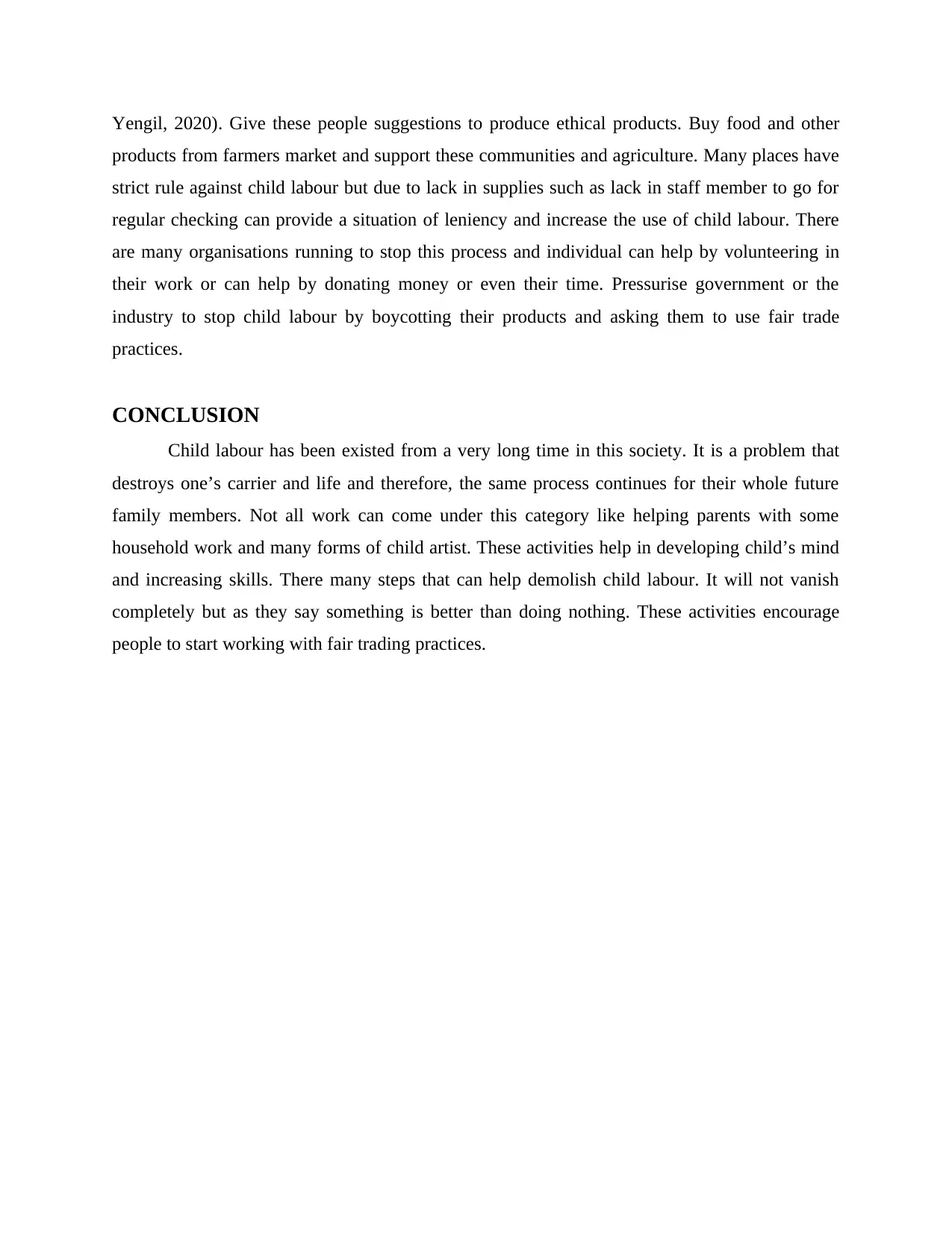
Yengil, 2020). Give these people suggestions to produce ethical products. Buy food and other
products from farmers market and support these communities and agriculture. Many places have
strict rule against child labour but due to lack in supplies such as lack in staff member to go for
regular checking can provide a situation of leniency and increase the use of child labour. There
are many organisations running to stop this process and individual can help by volunteering in
their work or can help by donating money or even their time. Pressurise government or the
industry to stop child labour by boycotting their products and asking them to use fair trade
practices.
CONCLUSION
Child labour has been existed from a very long time in this society. It is a problem that
destroys one’s carrier and life and therefore, the same process continues for their whole future
family members. Not all work can come under this category like helping parents with some
household work and many forms of child artist. These activities help in developing child’s mind
and increasing skills. There many steps that can help demolish child labour. It will not vanish
completely but as they say something is better than doing nothing. These activities encourage
people to start working with fair trading practices.
products from farmers market and support these communities and agriculture. Many places have
strict rule against child labour but due to lack in supplies such as lack in staff member to go for
regular checking can provide a situation of leniency and increase the use of child labour. There
are many organisations running to stop this process and individual can help by volunteering in
their work or can help by donating money or even their time. Pressurise government or the
industry to stop child labour by boycotting their products and asking them to use fair trade
practices.
CONCLUSION
Child labour has been existed from a very long time in this society. It is a problem that
destroys one’s carrier and life and therefore, the same process continues for their whole future
family members. Not all work can come under this category like helping parents with some
household work and many forms of child artist. These activities help in developing child’s mind
and increasing skills. There many steps that can help demolish child labour. It will not vanish
completely but as they say something is better than doing nothing. These activities encourage
people to start working with fair trading practices.
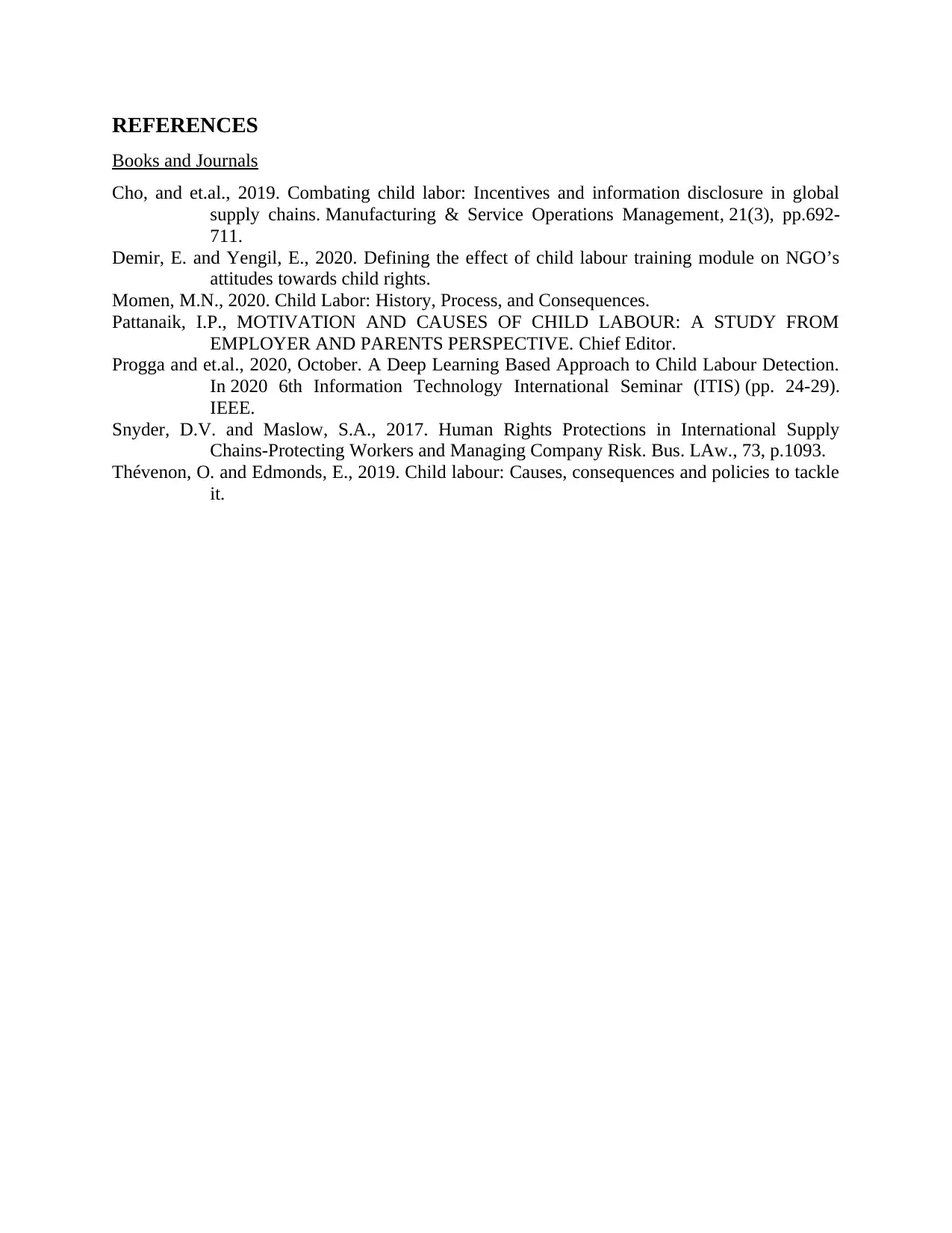
REFERENCES
Books and Journals
Cho, and et.al., 2019. Combating child labor: Incentives and information disclosure in global
supply chains. Manufacturing & Service Operations Management, 21(3), pp.692-
711.
Demir, E. and Yengil, E., 2020. Defining the effect of child labour training module on NGO’s
attitudes towards child rights.
Momen, M.N., 2020. Child Labor: History, Process, and Consequences.
Pattanaik, I.P., MOTIVATION AND CAUSES OF CHILD LABOUR: A STUDY FROM
EMPLOYER AND PARENTS PERSPECTIVE. Chief Editor.
Progga and et.al., 2020, October. A Deep Learning Based Approach to Child Labour Detection.
In 2020 6th Information Technology International Seminar (ITIS) (pp. 24-29).
IEEE.
Snyder, D.V. and Maslow, S.A., 2017. Human Rights Protections in International Supply
Chains-Protecting Workers and Managing Company Risk. Bus. LAw., 73, p.1093.
Thévenon, O. and Edmonds, E., 2019. Child labour: Causes, consequences and policies to tackle
it.
Books and Journals
Cho, and et.al., 2019. Combating child labor: Incentives and information disclosure in global
supply chains. Manufacturing & Service Operations Management, 21(3), pp.692-
711.
Demir, E. and Yengil, E., 2020. Defining the effect of child labour training module on NGO’s
attitudes towards child rights.
Momen, M.N., 2020. Child Labor: History, Process, and Consequences.
Pattanaik, I.P., MOTIVATION AND CAUSES OF CHILD LABOUR: A STUDY FROM
EMPLOYER AND PARENTS PERSPECTIVE. Chief Editor.
Progga and et.al., 2020, October. A Deep Learning Based Approach to Child Labour Detection.
In 2020 6th Information Technology International Seminar (ITIS) (pp. 24-29).
IEEE.
Snyder, D.V. and Maslow, S.A., 2017. Human Rights Protections in International Supply
Chains-Protecting Workers and Managing Company Risk. Bus. LAw., 73, p.1093.
Thévenon, O. and Edmonds, E., 2019. Child labour: Causes, consequences and policies to tackle
it.
⊘ This is a preview!⊘
Do you want full access?
Subscribe today to unlock all pages.

Trusted by 1+ million students worldwide
1 out of 6
Related Documents
Your All-in-One AI-Powered Toolkit for Academic Success.
+13062052269
info@desklib.com
Available 24*7 on WhatsApp / Email
![[object Object]](/_next/static/media/star-bottom.7253800d.svg)
Unlock your academic potential
Copyright © 2020–2025 A2Z Services. All Rights Reserved. Developed and managed by ZUCOL.





